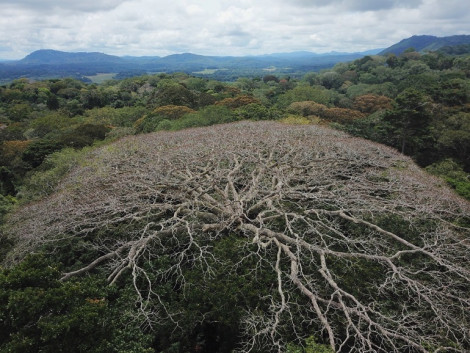

News | 22.04.2021
An international study involving several ATIBT members reveals the composition of Central African forests and their vulnerability to global change. Using an exceptional dataset collected by foresters and made available to scientists - more than 6 million trees from 180,000 plots in five countries - researchers have produced the first continuous maps of the floristic and functional composition of these forests, allowing them to identify the most vulnerable massifs. These results were published in the journal Nature on April 21, 2021.

Central Africa is home to the world's second-largest continuous massif of tropical forest, but as the human population grows and the Earth warms, this African forests are increasingly under threat. To protect them and manage them sustainably, it is necessary to understand their current composition.
Maxime Réjou-Méchain (IRD) and his colleagues, including several members of the scientific council or commissions of ATIBT*, have identified ten main forest types. Modeling their evolution, taking into account the IPCC climate scenarios and the evolution of anthropogenic pressures, suggests that the northern and southern peripheral forest areas, the Atlantic forests and most of the forests of the Democratic Republic of Congo are very vulnerable to the changes expected by 2085.
The authors suggest that these data can be used to define strategies to preserve the full evolutionary and functional potential of forests. Protected areas, for example, cover nearly 15% of the forest area in Central Africa, but they are not evenly distributed across the 10 forest types identified. The same is true for the monitoring systems for forest dynamics. These should be expanded to improve their representativeness. Forest concessions can also contribute to the maintenance of forest cover and ecosystem functions; if well managed, they can be a form of extension of protected areas. The greatest uncertainties relate to the forests of the Democratic Republic of Congo, where significant areas remain unallocated to any land-use category and should warrant special attention because of their high vulnerability.
The data used for these models were acquired thanks to public-private partnerships involving research centers, consulting firms and forestry companies in the North and South. Many of them are partners of the Dynafac network, in which ATIBT actively participates (https://www.dynafac.org/en).
This work shows that the forest management work carried out by the concessionary companies and the States that own the forests is a major contribution to better knowledge and better management of the forests.
* Nicolas Bayol, Jean-Louis Doucet, Alfred Ngomanda, Bonaventure Sonké, Olga Yongo, Sylvie Gourlet-Fleury, Jean-Joël Loumeto
Read the press release here
You can also read the full article here
tag(s) :